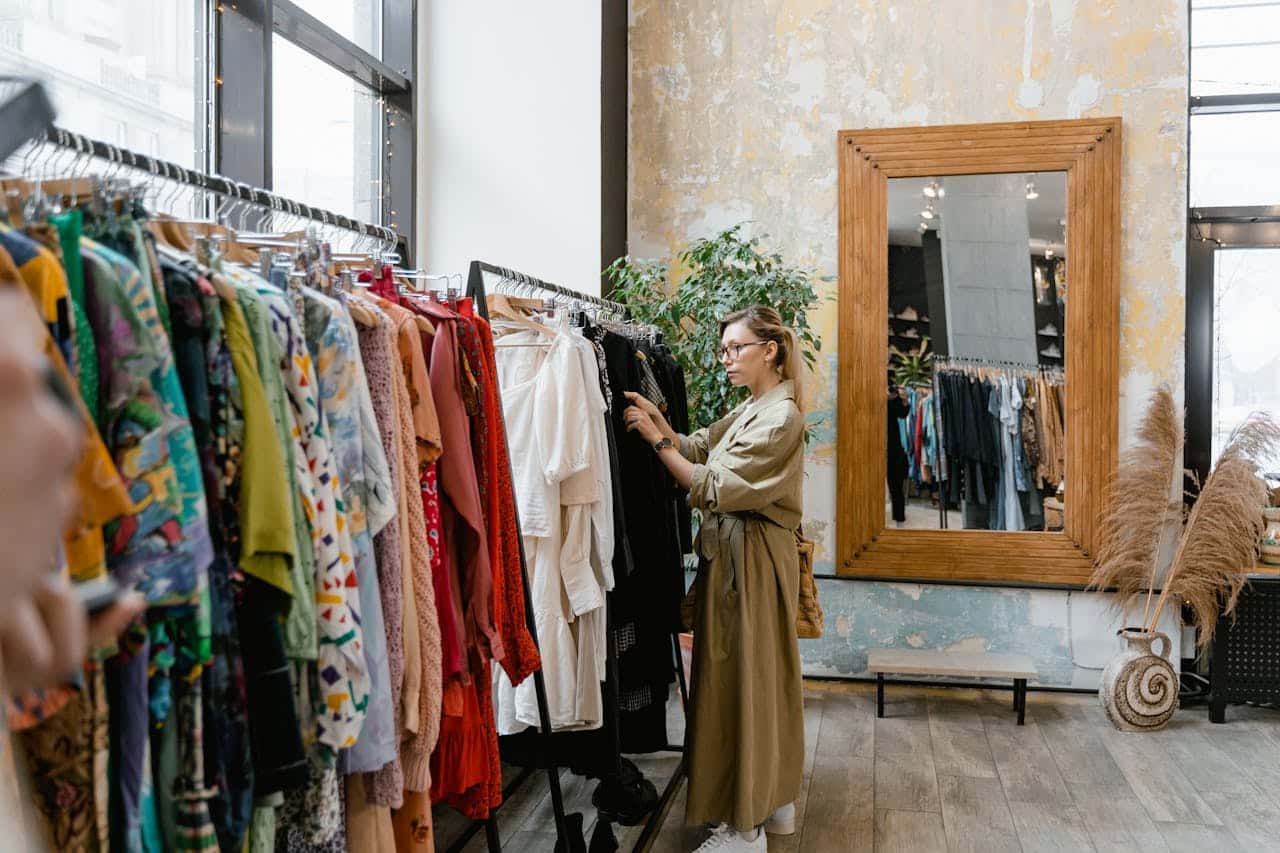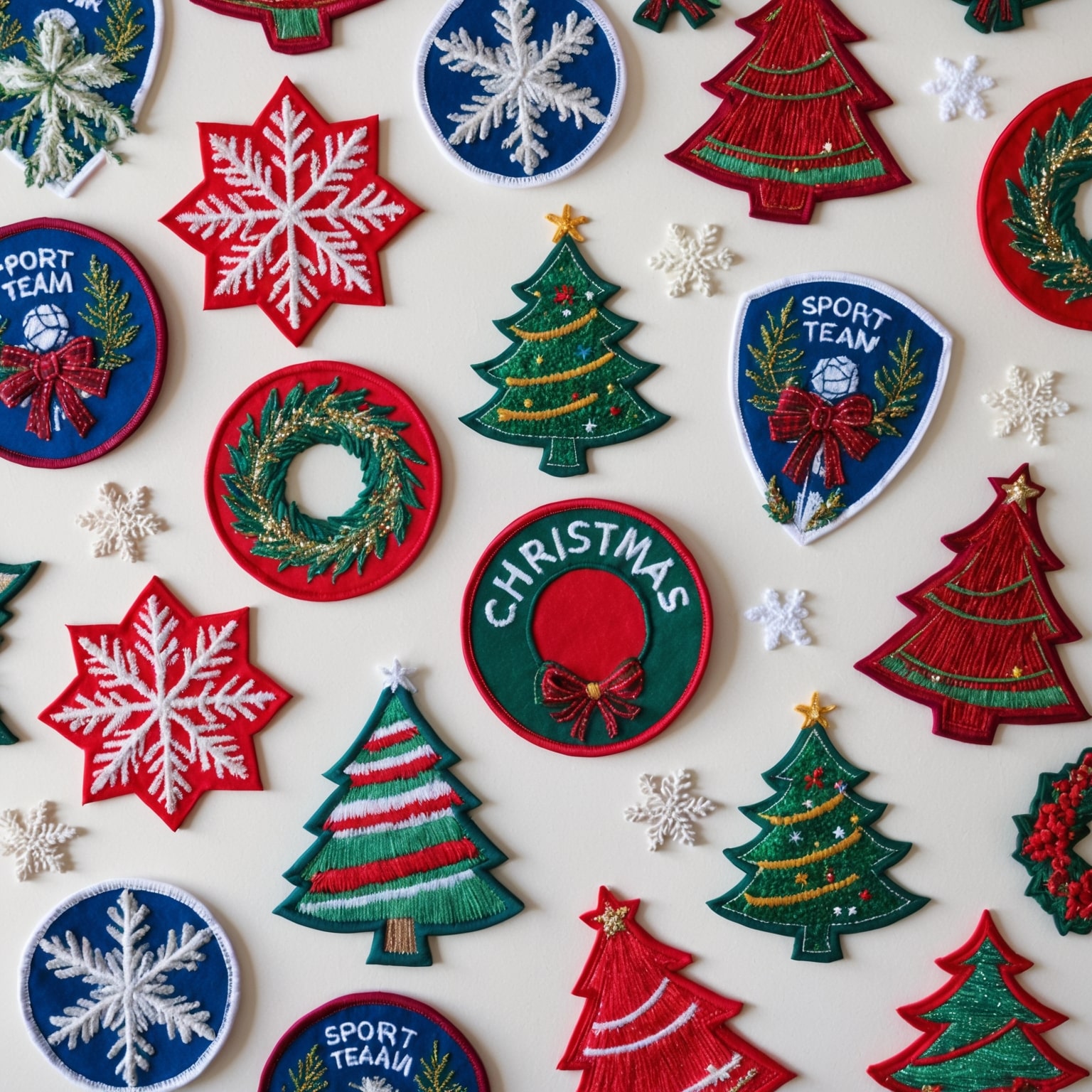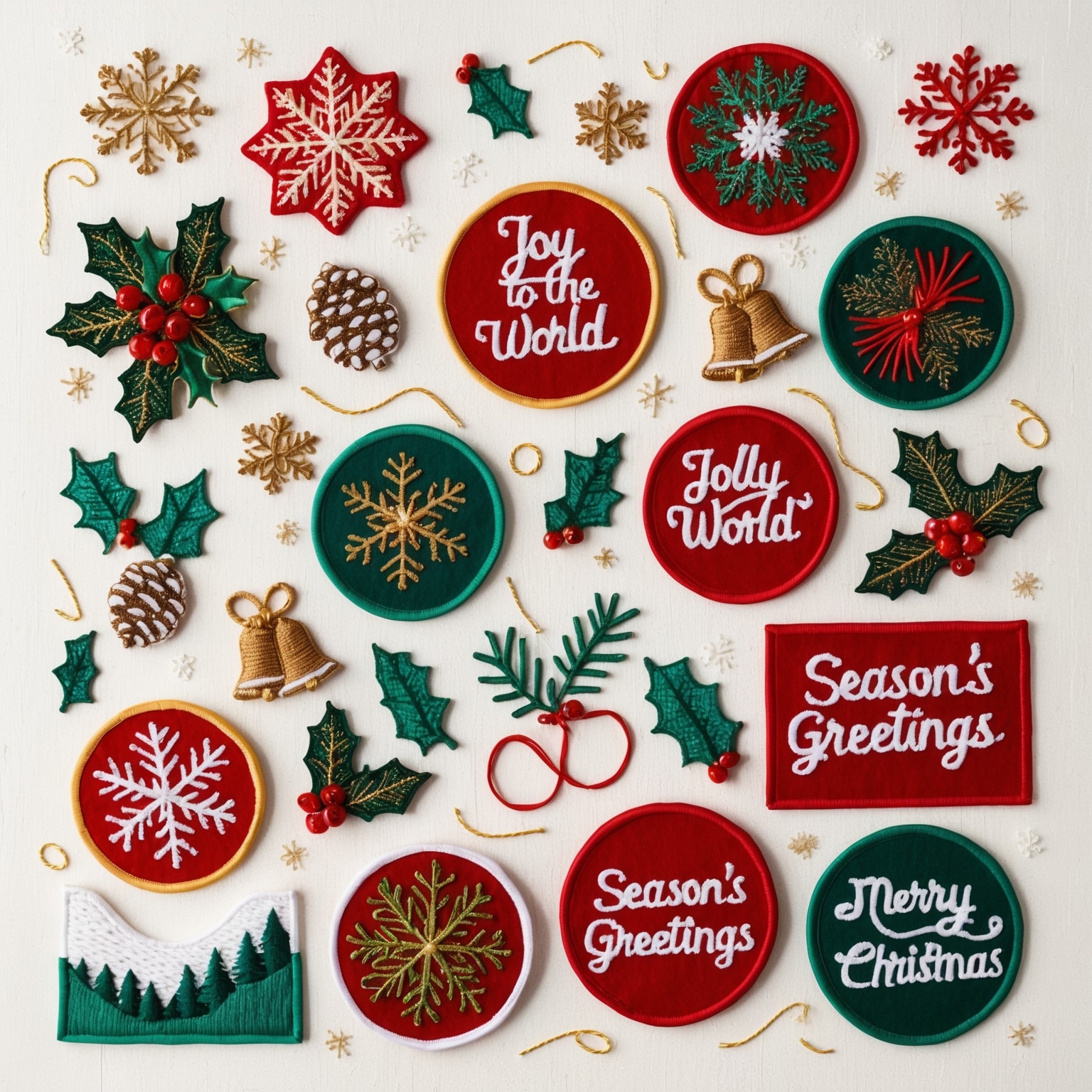In the dynamic world of fashion, trends come and go, but some elements remain timeless due to their versatility, creativity, and ability to transform garments into something truly unique. One such element is the use of custom patches. Once primarily associated with military uniforms, biker gangs, and school emblems, custom patches have evolved into a significant fashion statement, playing a crucial role in elevating modern fashion collections.
Custom patches allow designers to infuse their collections with a personalized touch, offering endless possibilities for creativity and expression. Whether it’s a bold logo, a subtle monogram, or intricate artwork, patches can be the perfect accessory to make garments stand out in a crowded market. This article explores how custom patches have become a staple in the fashion industry, the trends driving their popularity, and how designers can effectively incorporate them into their collections.
The Evolution of Custom Patches in Fashion
Custom patches have a rich history that dates back centuries. Originally used to identify military units and rank, patches have long been a part of uniforms and workwear. Over time, they crossed over into mainstream culture, becoming symbols of identity, affiliation, and personal expression.
1. From Uniforms to High Fashion
The transition of custom patches from military uniforms to fashion collections was a gradual process, largely driven by subcultures such as punk rockers, bikers, and skaters who used patches to express their identities and beliefs. These groups popularized the idea of using patches as a form of rebellion, personalization, and artistic expression. In the 1980s and 1990s, custom patches became a key element of streetwear, further solidifying their place in fashion.
High-end designers soon took notice, and custom patches began appearing on the runways of major fashion houses. Designers like Jean-Paul Gaultier, Vivienne Westwood, and Marc Jacobs incorporated patches into their collections, elevating them from subculture symbols to high fashion statements. Today, custom patches are a popular tool for both luxury and streetwear brands, used to create visually striking and highly personalized pieces.
2. The Role of Custom Patches in Contemporary Fashion
In contemporary fashion, custom patches are more than just decorative elements; they are a way to tell a story, convey a message, and create a unique identity for a brand or collection. They offer designers a flexible medium to experiment with colors, textures, and designs that can be easily adapted to different garments and accessories.
The resurgence of custom patches in fashion can be attributed to several factors:
- Personalization: As consumers seek more personalized and unique fashion items, custom patches offer a way to individualize garments. Brands can create limited-edition patches that resonate with specific audiences, making their collections more desirable.
- Sustainability: In an era where sustainability is a significant concern, custom patches offer a way to refresh and repurpose existing garments. By adding a patch, designers can give new life to old clothes, reducing waste and promoting eco-friendly fashion practices.
- Nostalgia: The retro appeal of patches, particularly those that evoke memories of past decades, has contributed to their popularity in fashion. Vintage-inspired patches can add a sense of nostalgia to modern collections, appealing to consumers’ emotions and memories.
The Impact of Custom Patches on Fashion Collections
Custom patches can have a profound impact on fashion collections, offering designers a versatile tool to enhance their garments and accessories. Below, we explore the various ways in which custom patches can elevate fashion collections and set them apart in a competitive industry.
1. Brand Identity and Recognition
One of the most significant benefits of custom patches is their ability to reinforce brand identity. A well-designed patch can become synonymous with a brand, serving as a recognizable symbol that distinguishes it from competitors. Whether it’s a simple logo or a more complex design, patches can communicate a brand’s ethos, values, and aesthetic in a way that is both subtle and powerful.
Practical Example:
Luxury fashion brand Gucci has effectively used custom patches to reinforce its brand identity. The iconic double-G logo, often embroidered onto patches, has become a symbol of luxury and sophistication. By incorporating these patches into jackets, bags, and accessories, Gucci has strengthened its brand recognition and appeal.
2. Adding Depth and Texture to Garments
Custom patches can add depth and texture to garments, transforming a simple piece of clothing into a work of art. The use of different materials, such as leather, felt, or metallic threads, can create a three-dimensional effect that adds visual interest and complexity to the design. Patches can be used to embellish a wide range of garments, from denim jackets to t-shirts, creating a unique look that is both tactile and visually appealing.
Practical Example:
Designer Isabel Marant has used custom patches to add texture and dimension to her collections. By incorporating embroidered patches with intricate designs and rich textures onto her garments, Marant has created pieces that are not only visually striking but also offer a tactile experience.
3. Storytelling Through Design
Custom patches provide designers with a medium to tell a story through their collections. Whether it’s a narrative about the brand’s heritage, a social or political statement, or a tribute to a particular culture or movement, patches can convey messages that resonate with consumers. The ability to create custom designs means that each patch can be unique, contributing to a larger narrative that unfolds throughout the collection.
Practical Example:
Fashion brand Off-White, founded by designer Virgil Abloh, often uses custom patches to tell stories related to youth culture, streetwear, and social issues. The patches on Off-White garments frequently feature bold graphics and text that convey messages about identity, community, and rebellion.
4. Creating Limited Editions and Collaborations
Custom patches are an ideal tool for creating limited-edition collections and collaborations. By designing exclusive patches for a particular collection or partnership, brands can create a sense of exclusivity and urgency, encouraging consumers to purchase limited-edition items before they sell out. Collaborations with artists, celebrities, or other brands can also be enhanced by custom patches that reflect the unique vision of the partnership.
Practical Example:
Supreme, the iconic streetwear brand, has frequently used custom patches in its collaborations with other brands and artists. These patches often feature unique designs that are specific to the collaboration, making the garments highly collectible and desirable.
5. Customization and Consumer Engagement
In today’s fashion landscape, consumers are increasingly seeking ways to personalize their clothing and accessories. Custom patches offer a simple yet effective way for brands to engage with their customers by allowing them to customize their garments. Whether it’s through online customization tools or in-store customization events, brands can offer consumers the opportunity to choose or design their own patches, creating a more interactive and personalized shopping experience.
Practical Example:
Levi’s has embraced the customization trend by offering customers the ability to personalize their denim jackets with custom patches. Through their online store and in select retail locations, consumers can choose from a variety of patch designs or create their own, making each jacket unique to the wearer.
6. Revitalizing Classic Pieces
Custom patches can breathe new life into classic or vintage garments, making them relevant to contemporary fashion trends. By adding patches to iconic pieces, designers can update their collections while maintaining the timeless appeal of the garments. This approach is particularly popular in streetwear, where the fusion of old and new is a key element of the aesthetic.
Practical Example:
Streetwear brand A Bathing Ape (BAPE) has revitalized classic military jackets by adding custom patches that feature the brand’s signature camouflage patterns and logos. The result is a modern take on a classic garment that appeals to both new and loyal customers.
Current Trends in Custom Patches for Fashion
As custom patches continue to gain popularity in the fashion industry, several trends have emerged that are shaping their use in collections. These trends reflect the evolving tastes of consumers and the innovative approaches of designers in incorporating patches into their work.
1. Sustainability and Upcycling
Sustainability is one of the most significant trends in fashion today, and custom patches play a crucial role in promoting eco-friendly practices. Designers are increasingly using patches to upcycle old or damaged garments, giving them a new lease on life. This approach not only reduces waste but also allows designers to create unique, one-of-a-kind pieces that stand out in a crowded market.
Practical Example:
Designer Stella McCartney, known for her commitment to sustainability, has used custom patches in her collections to upcycle vintage garments. By adding patches with nature-inspired designs, McCartney transforms old pieces into new, sustainable fashion statements.
2. Bold and Oversized Designs
Bold and oversized patches have become a popular trend in fashion, with designers using them to make a strong visual statement. These patches often cover large areas of a garment, such as the back of a jacket or the front of a sweater, and feature eye-catching graphics, logos, or text. The oversized design trend allows for more detailed and intricate patchwork, making the garment a true standout piece.
Practical Example:
Balenciaga has embraced the bold and oversized patch trend in its collections, with jackets and hoodies featuring large, statement patches that dominate the design. These patches often include the brand’s logo or provocative text, making the pieces instantly recognizable.
3. Monograms and Initials
Monograms and initials have always been a symbol of luxury and personalization in fashion. Custom patches featuring monograms or initials offer a subtle yet sophisticated way to add a personal touch to garments. This trend is particularly popular in accessories, such as bags, shoes, and hats, where monogrammed patches can add an element of exclusivity and individuality.
Practical Example:
Luxury brand Louis Vuitton has long been associated with monograms, and the brand has incorporated custom monogram patches into its accessories line. Customers can choose to add their initials or a personalized monogram patch to their Louis Vuitton bags, making each piece unique.
4. Artistic and Handcrafted Patches
As consumers seek more authentic and artisanal fashion, there has been a growing trend towards artistic and handcrafted patches. These patches often feature intricate embroidery, hand-painted designs, or unique textures that showcase the craftsmanship behind the piece. This trend reflects a desire for slow fashion and high-quality, handmade products that stand out from mass-produced items.
Practical Example:
Designer Simone Rocha has used handcrafted patches in her collections, featuring delicate embroidery and beadwork that add a luxurious, artisanal touch to her garments. These patches are often inspired by nature and folklore, adding a whimsical and romantic element to the designs.
5. Vintage and Retro-Inspired Patches
The nostalgia for past decades has led to a resurgence of vintage and retro-inspired patches in fashion. Designers are drawing inspiration from the patches of the 1960s, 70s, and 80s, incorporating elements such as vibrant colors, bold typography, and iconic symbols from these eras. This trend appeals to consumers’ love for nostalgia and adds a playful, retro vibe to contemporary collections.
Practical Example:
Tommy Hilfiger, a brand known for its classic American style, has embraced vintage-inspired patches in its collections. The brand’s jackets and sweatshirts often feature retro patches that evoke the preppy, all-American aesthetic of the 1980s.
How to Incorporate Custom Patches into Fashion Collections
For designers looking to incorporate custom patches into their fashion collections, it’s essential to approach the design process thoughtfully and strategically. Below are key considerations and steps to ensure that patches are effectively integrated into the overall aesthetic and vision of the collection.
1. Define the Collection’s Theme and Message
Before designing custom patches, it’s important to define the theme and message of the collection. Understanding the overarching concept will guide the design of the patches and ensure they align with the collection’s narrative. Whether the collection is inspired by a particular culture, era, or social issue, the patches should reinforce and enhance the story being told.
Practical Example:
A designer creating a collection inspired by urban street culture might use patches that feature graffiti-style text, cityscapes, or symbols of rebellion. These patches would complement the overall aesthetic of the collection and reinforce its message of urban identity and self-expression.
2. Choose the Right Materials and Techniques
The choice of materials and techniques used to create custom patches will significantly impact their appearance and quality. Designers should consider the texture, durability, and overall look of the patches when selecting materials. Popular materials for patches include embroidered threads, leather, felt, and metallic threads, each offering a different aesthetic and feel.
Practical Example:
For a collection with a luxurious feel, a designer might opt for embroidered patches with metallic threads that add a touch of glamour and sophistication. Alternatively, a streetwear collection might feature felt patches with bold, graphic designs for a more casual, edgy look.
3. Balance Subtlety and Boldness
When incorporating custom patches into a fashion collection, finding the right balance between subtlety and boldness is key. While some patches may be designed to make a strong visual statement, others should be more understated, adding a touch of detail without overpowering the garment. This balance ensures that the patches complement the overall design rather than detract from it.
Practical Example:
A designer creating a minimalist collection might use small, monochromatic patches that blend seamlessly with the fabric, adding texture without drawing too much attention. On the other hand, a more eclectic collection might feature large, colorful patches that serve as the focal point of the design.
4. Consider Placement and Proportion
The placement and proportion of custom patches on a garment are crucial to achieving the desired visual impact. Designers should consider where the patches will be most effective, whether it’s on the chest, back, sleeve, or hem of the garment. Additionally, the size of the patch should be proportionate to the garment, ensuring it enhances the design without overwhelming it.
Practical Example:
For a denim jacket, a designer might choose to place a large patch on the back, creating a bold statement piece. Smaller patches could be placed on the sleeves or front pockets to add detail and balance the overall design.
5. Test and Iterate
As with any design element, it’s important to test and iterate on the use of custom patches in a fashion collection. Designers should create prototypes and experiment with different placements, materials, and designs to see what works best. Feedback from peers, collaborators, or even potential customers can provide valuable insights that lead to the refinement of the final product.
Practical Example:
A designer might create several samples of a jacket with different patch designs and placements. By reviewing the samples and gathering feedback, the designer can make informed decisions about which version best represents the vision for the collection.
6. Collaborate with Patch Makers
Collaborating with experienced patch makers is essential to ensure the highest quality and craftsmanship of the custom patches. Designers should work closely with manufacturers to bring their vision to life, discussing materials, techniques, and any special requirements for the patches. A strong collaboration can result in patches that are not only visually stunning but also durable and well-made.
Practical Example:
A designer working on a high-end fashion collection might partner with a specialized embroidery house known for its expertise in creating intricate, high-quality patches. This collaboration ensures that the final product meets the designer’s standards and enhances the overall quality of the collection.
The Timeless Appeal of Custom Patches in Fashion
Custom patches have become an indispensable tool for fashion designers, offering a versatile and creative way to elevate collections. Whether used to reinforce brand identity, add texture and depth, tell a story, or create limited-edition pieces, patches have the power to transform garments into unique works of art. As trends continue to evolve, custom patches remain a timeless element in fashion, celebrated for their ability to personalize, innovate, and make bold statements.
For designers looking to stay ahead in the competitive fashion industry, incorporating custom patches into their collections offers a way to stand out and connect with consumers on a deeper level. By embracing the artistry and craftsmanship of patches, designers can create fashion that is not only visually stunning but also rich in meaning and cultural significance.
If you are interested in purchasing high-quality custom patches, feel free to call us at 1-877-503-8485 or fill out one of our FREE quotes here




